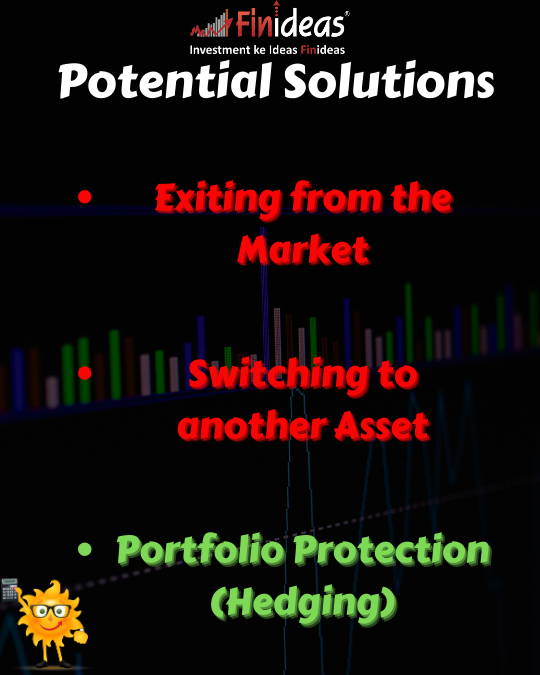Navigating the Markets: Decoding Nifty at 21,000
Introduction:
The stock market is a dynamic and ever-changing landscape, and investors constantly find themselves at crossroads when making decisions. One such juncture is the current scenario with Nifty at 21,000. In this blog post, we’ll explore actionable strategies for investors.To safeguard your wealth amidst market volatility, particularly with the Nifty surpassing 21,000, it is imperative to comprehend and implement actionable strategies that can effectively navigate both market highs and lows.
Problem
“Now the stock market is doing really well, the nifty has touched 21000 and the portfolio is making lots of money, it’s easy to get caught up in the excitement. But it’s super important for investors to remember to be careful, especially when things seem too good to be true. Just because stock prices are going up doesn’t mean they’ll stay that way forever.
Think of it like a roller coaster – what goes up comes down at some point. If investors aren’t careful, they might end up losing a lot of money when the market takes a downturn. So, even when things are going great, it’s smart for investors to be a bit cautious and have a plan to protect themselves from potential losses when the market goes down “
Potential Solutions
- Exiting from the market: While it’s true that exiting the market can be a quick way to shield yourself from potential losses, it’s not necessarily the best long-term solution for building wealth. The stock market, like a marathon, rewards those who stay in for the long run. Exiting might provide a temporary escape, but this can’t be the proper solution
- Switching to another asset: Switching from a high-performing asset class to a low-performing one might seem like a quick fix to this problem , but it comes with its own set of challenges. The concern lies in the possibility that the underperforming asset may continue to underperform over the long run, while the high-performing one continues to shine.so shifting from one asset class to other also doesn’t seems a proper solution
- Portfolio Protection (Hedging): In the dynamic world of investing, safeguarding your portfolio against potential downturns is a crucial consideration. In portfolio protection, strategic hedging can prove to be a financial shield in times of market volatility.
Employing options and futures contracts might seem like an additional expense, with premiums to be paid upfront. However, viewing this as a mere cost overlooks the broader perspective. Yes, you pay a premium for protection, but consider it an insurance policy for your investments. It’s not just about preserving your current portfolio value; it’s about ensuring that even in the face of adverse market movements, you have a safety net. While the premium may initially weigh on performance, it opens the door to a unique advantage.
In the event of a market downturn, you not only mitigate potential losses, but you also receive a claim. This claim, when reinvested wisely, holds the key to long-term benefits. It’s not just about hedging; it’s about seizing opportunities that arise when others might be grappling with losses. So, in the grand scheme of things, the cost of protection transforms into an investment strategy that positions you to navigate the market’s uncertainties with resilience and foresight.
Now we have three potential options: exiting the market, shifting to another asset class, or opting for protection through hedging. Out of these choices, the most advantageous seems to be protection, specifically through hedging. This strategy allows us to stay invested in the market while simultaneously safeguarding against potential downturns.
Protecting your investments is crucial, and the Index Long Term Strategy (ILTS) offers a smart solution. By diversifying with Index ETFs and Futures, you shield your money from market swings. Adding a protective layer ensures your investments stay safe during unpredictable market moments. Allocating some funds to Debt Funds acts as a stabilizing force. The ILTS not only keeps your money growing but also safeguards it from market downturns, paving the way for financial prosperity.
For a deeper understanding, explore the Index Long Term Strategy and secure your financial journey.
Conclusion:
In the dynamic world of investing, reaching the milestone of Nifty at 21,000 brings both opportunities and risks. While the temptation to exit or switch assets may arise, the smart move is to embrace a protective strategy like hedging. Through tools like options and futures contracts, investors can create a financial shield against market volatility, ensuring their portfolios not only weather storms but also seize opportunities for long-term growth. The Index Long Term Strategy (ILTS) with a mix of Index ETFs, Futures, and Debt Funds emerges as a wise choice, offering a balanced approach to navigating the markets and securing your financial journey.
As we navigate the markets with Nifty at 21,000, what approach do you find most appealing for safeguarding your investments? Feel free to share your thoughts and reasons behind your choice!


